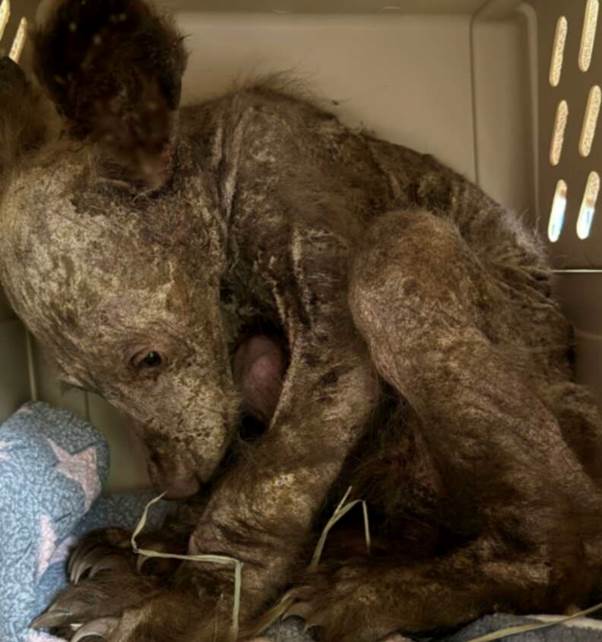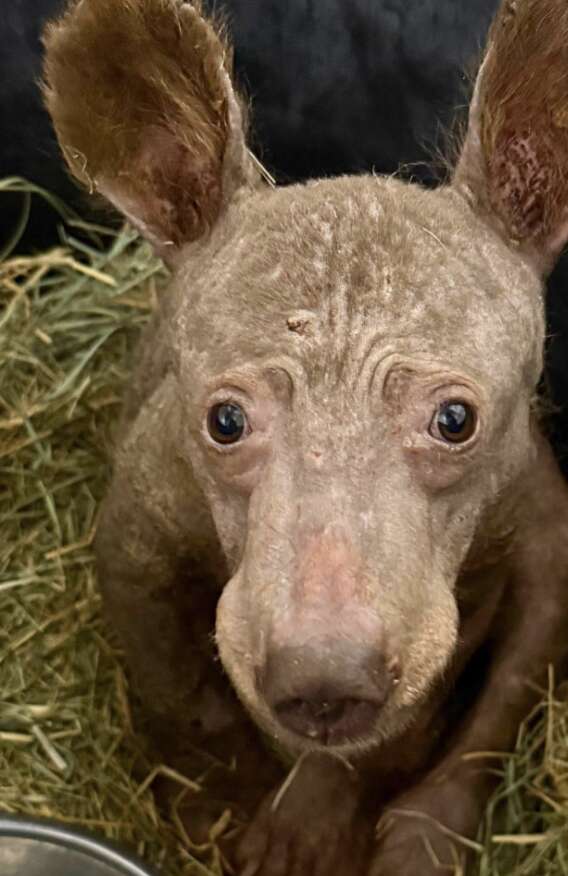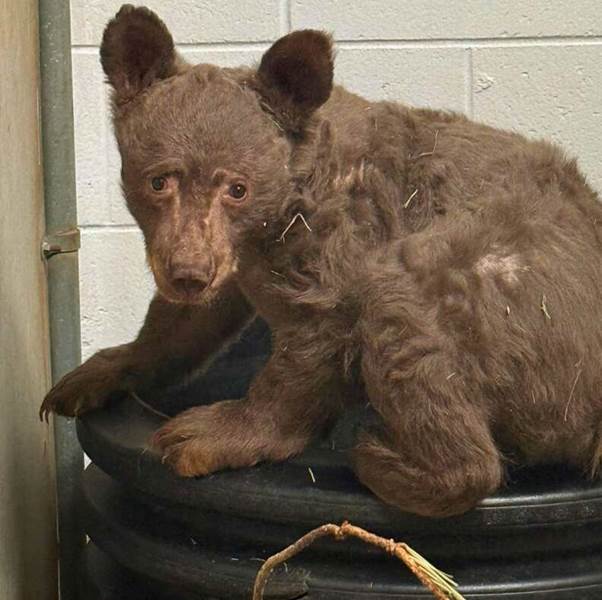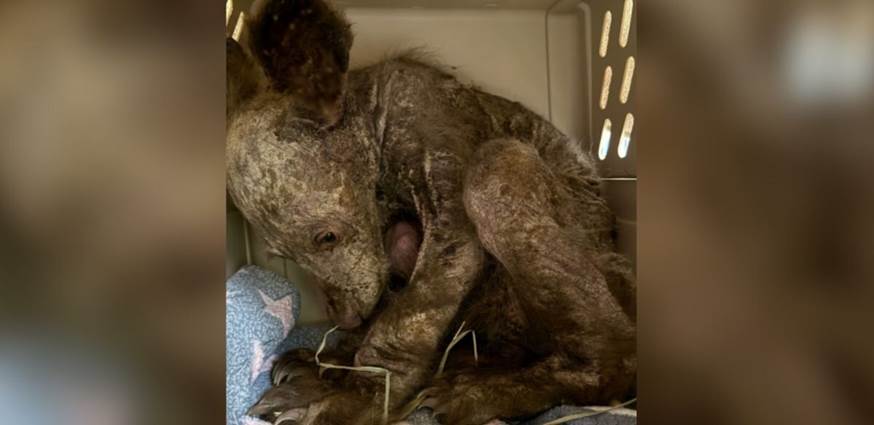When rescuers first met the tiny black bear cub in December, their hearts sank. The poor little guy had been found alone in El Dorado County, California, wandering without his mother and struggling to survive.
He was in terrible shape — dehydrated, anemic, and suffering from a severe skin infection that had left him nearly hairless. Instead of resembling a strong young bear, he looked frail and sickly, cowering in his crate and staring nervously at his oversized paws.
“It was heartbreaking to see a bear cub in such terrible condition,” said Chelsea Engberg, marketing and outreach manager for Gold Country Wildlife Rescue (GCWR) in North Auburn.
The team knew immediately that his road to recovery would not be easy. But one thing was certain: they were determined to give him every chance at survival.

Small Steps Toward Healing
Rescuers began by conducting a thorough exam and carefully creating a treatment plan. The cub received fluids for dehydration, medication for his infection, and proper nutrition to slowly build his strength. At first, progress was minimal — but then, little by little, hope began to bloom.
After a few weeks, rescuers spotted something remarkable: the faintest fuzz of fur starting to grow back on his face. To most people, it might not have seemed like a big deal, but to the GCWR team, it was monumental.
“While it might not seem like a big change, the fact that we are starting to see fur fuzz grow on his face is an exciting next step in his healing journey,” the organization shared in a Facebook post.
As the weeks passed, more fur returned, his eyes brightened, and his body grew stronger. But physical recovery wasn’t the only milestone. Slowly, the cub’s personality began to emerge.

Rediscovering His Wild Side
With his health improving, the cub started showing signs of playfulness and curiosity. GCWR staff provided him with enrichment tools like a kiddie pool and a hammock made from firehose material. He splashed, climbed, and explored — acting more like a real young bear each day.
Despite the bond rescuers felt with him, they knew they had to limit human contact. The goal was always to prepare him for a future in the wild. By keeping their distance, they ensured the cub wouldn’t grow dependent on people for comfort or survival.
The transformation was astonishing. By February, just a couple of months after his rescue, the once hairless, frightened cub looked like a completely different bear — healthy, fluffy, and full of energy.
“We are always amazed by the wild animals in our care, and this bear cub is one of the most amazing recoveries we have seen,” Engberg said proudly.

A Bright Future Ahead
For now, the cub remains at GCWR, where staff members continue to monitor his health and growth. His future will soon be decided by the California Department of Fish and Wildlife. If he is strong and self-sufficient enough, he may be released back into the wild, where he belongs. If not, he will find safety and stability in a protected sanctuary, where he can live out his life free from harm.
Either way, his story is already a victory. Just a few months ago, this little bear didn’t even look like a bear at all. Today, he’s thriving, wild at heart, and ready for whatever comes next.
“He was in such poor condition when he arrived that, in many ways, he didn’t even resemble a bear,” Engberg reflected. “The fact that he’s regrown so much of his fur and is remaining wild and not interested in humans is something that continues to make everyone at GCWR proud every day.”
This once-orphaned, nearly hairless cub has not only survived — he has shown everyone the incredible resilience of wildlife when compassion and care come together.


